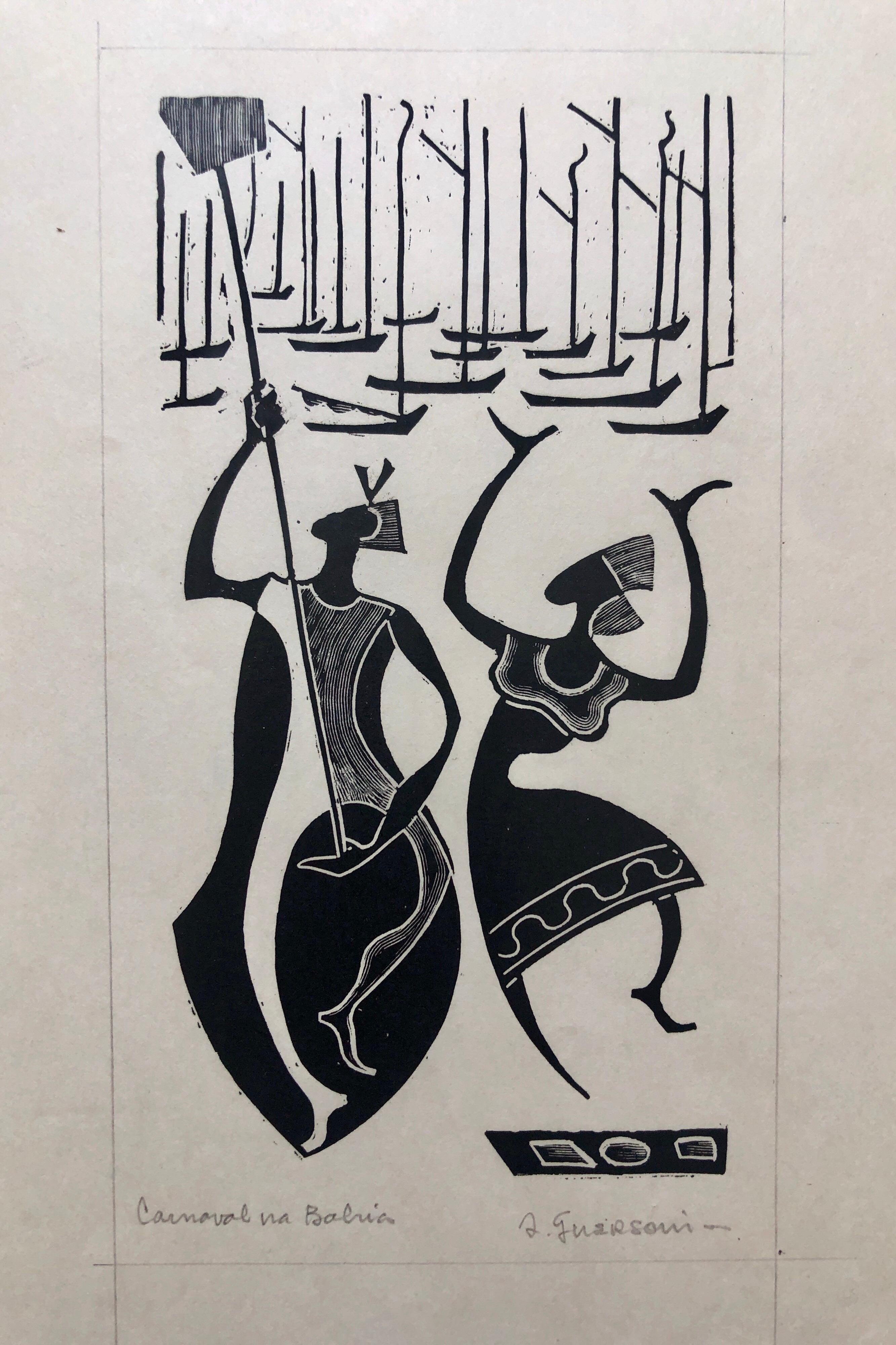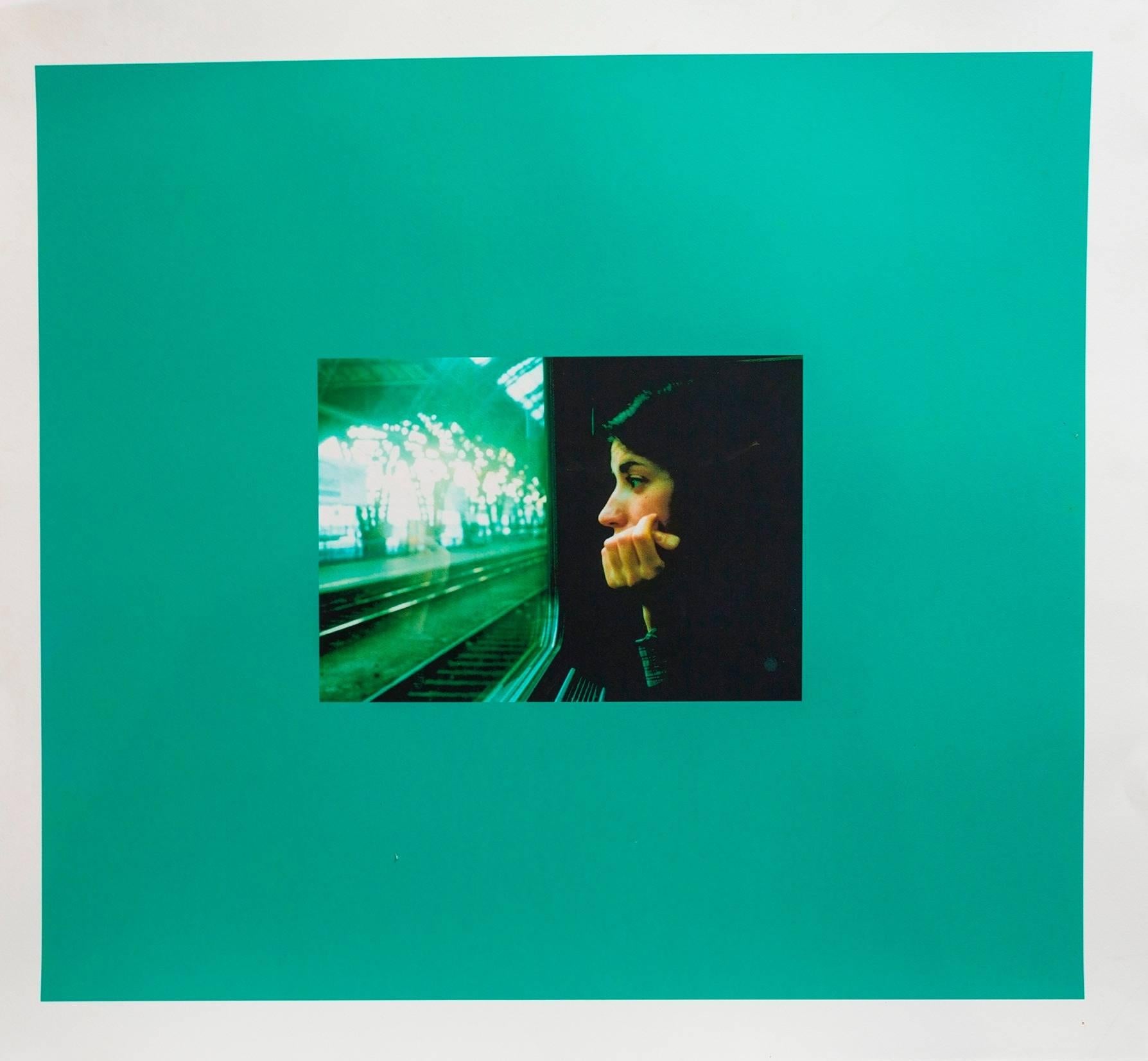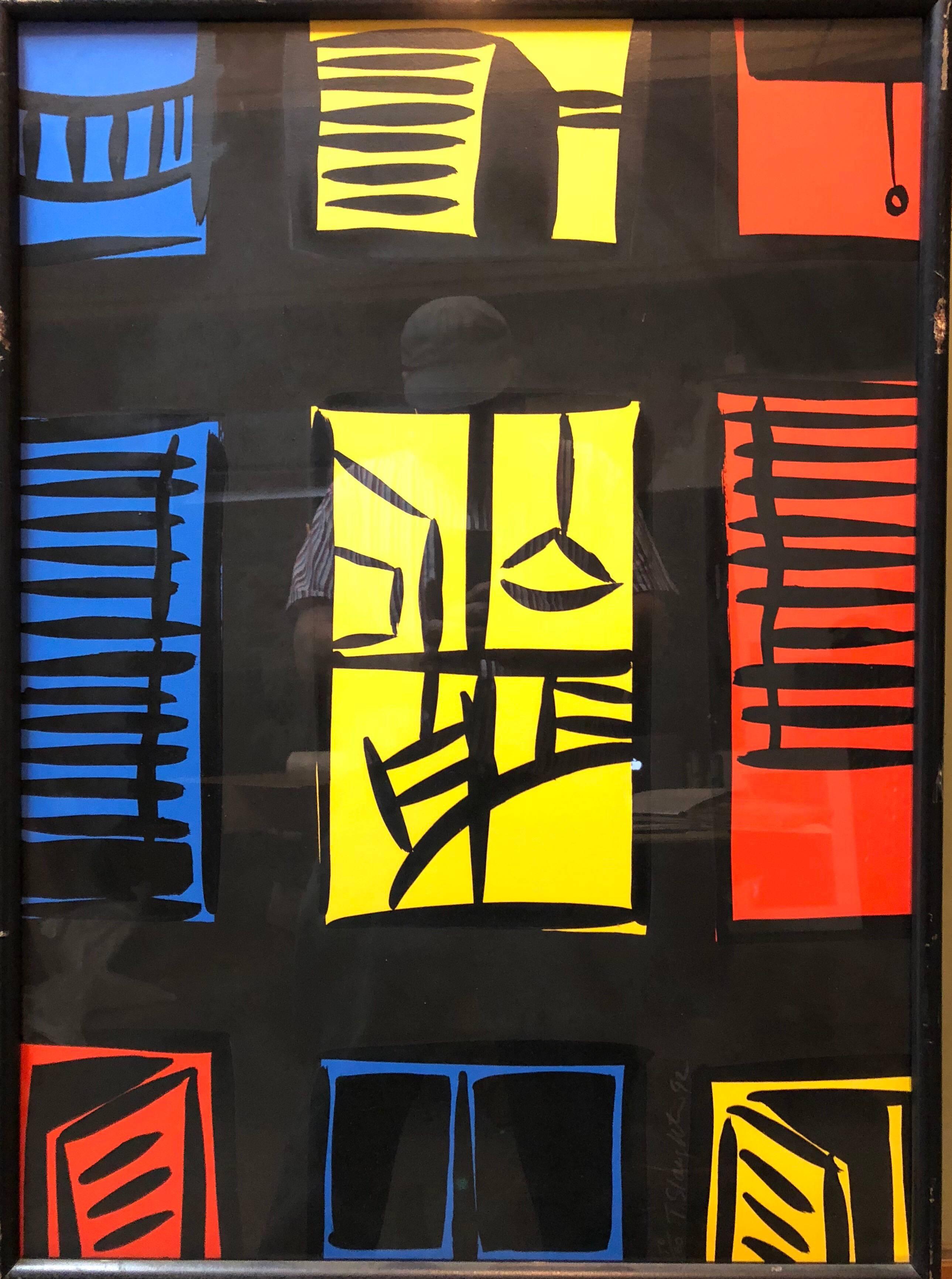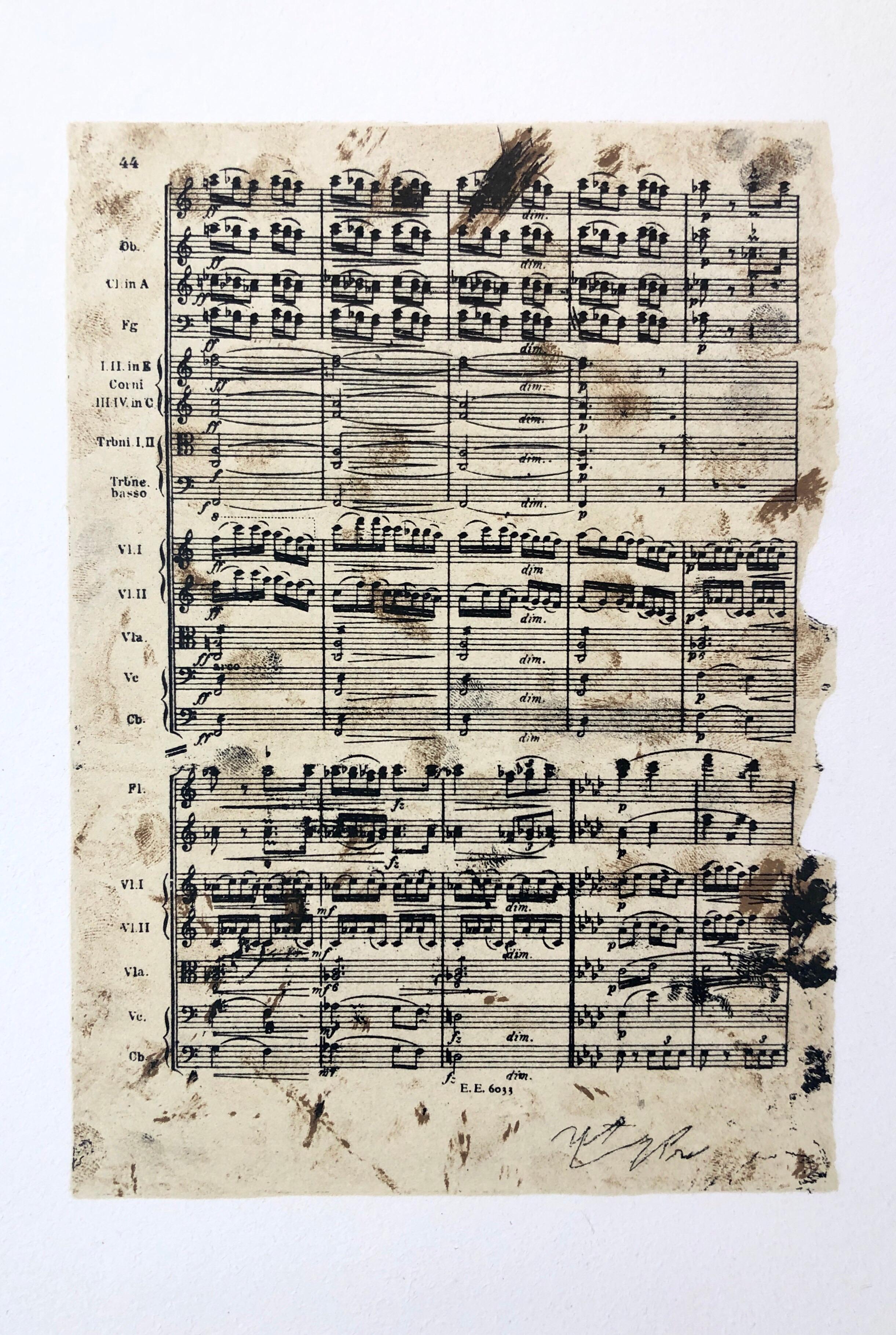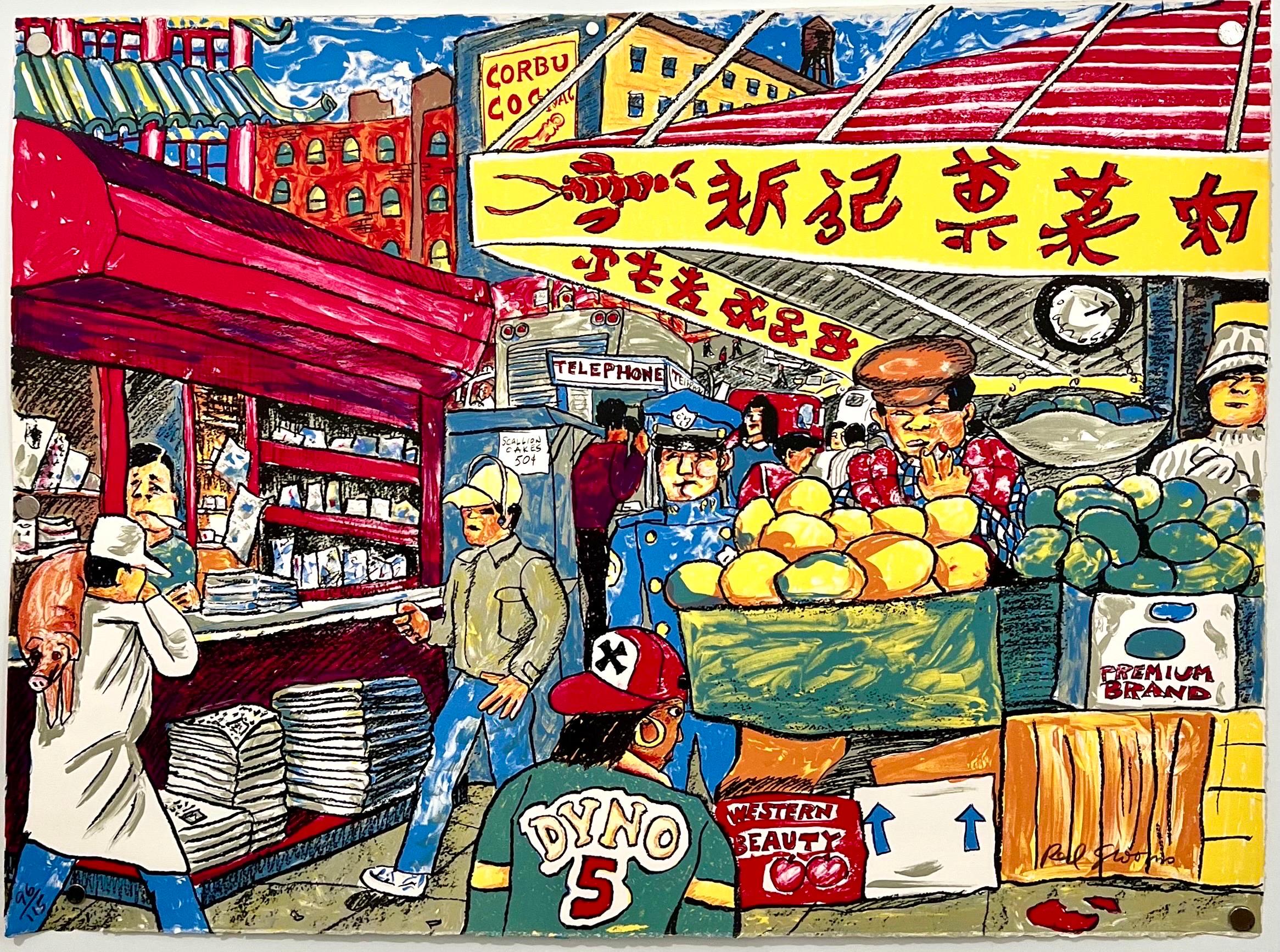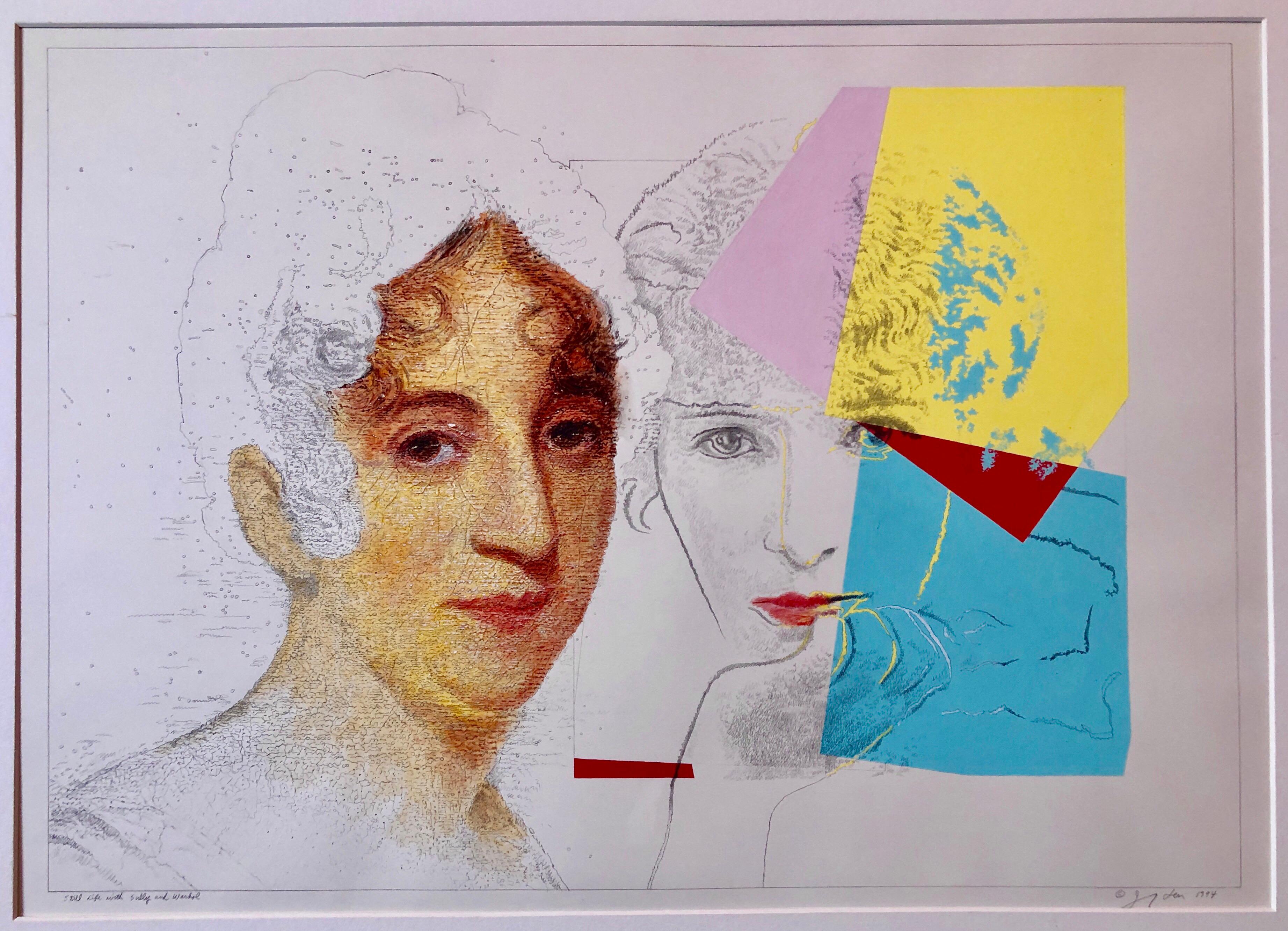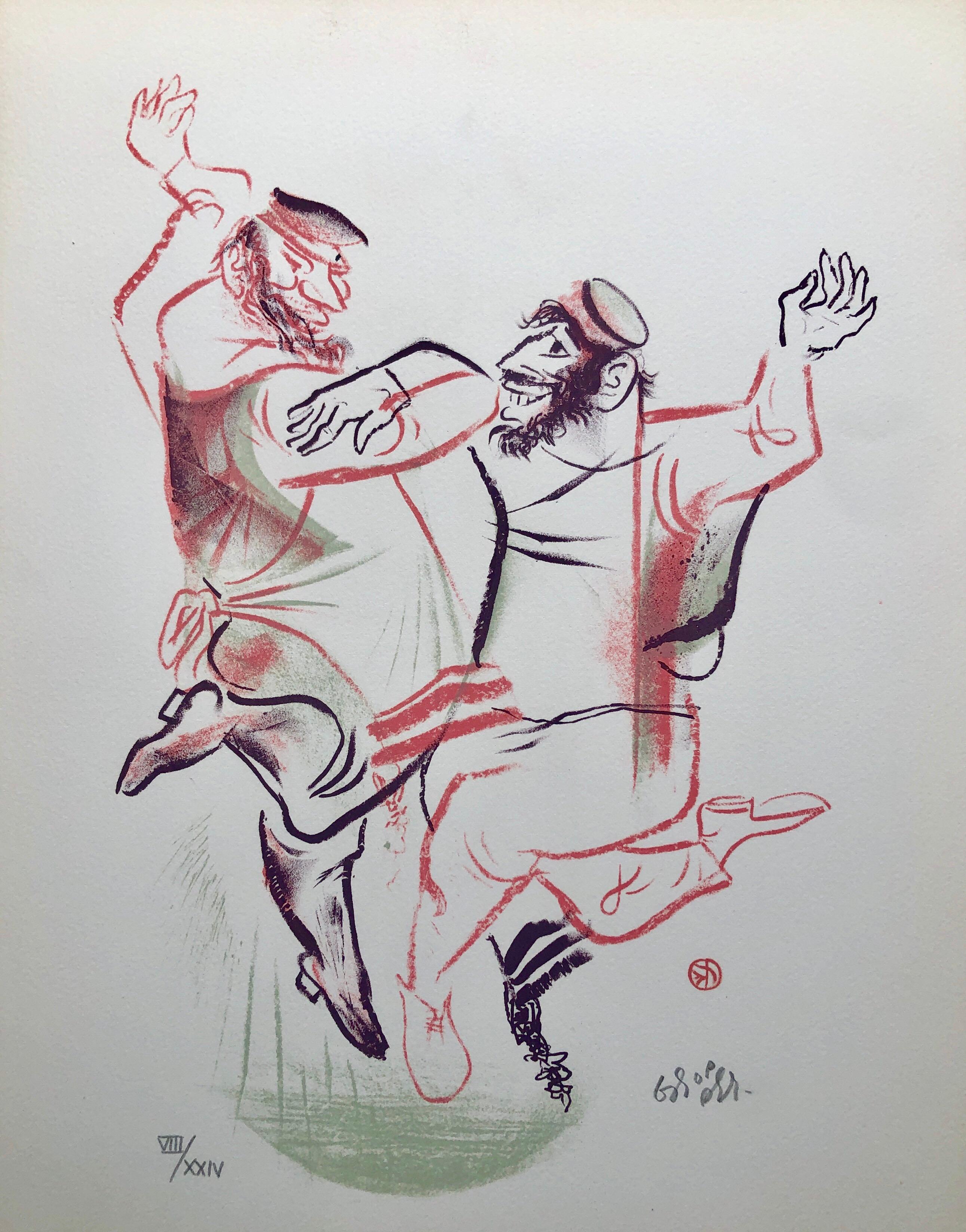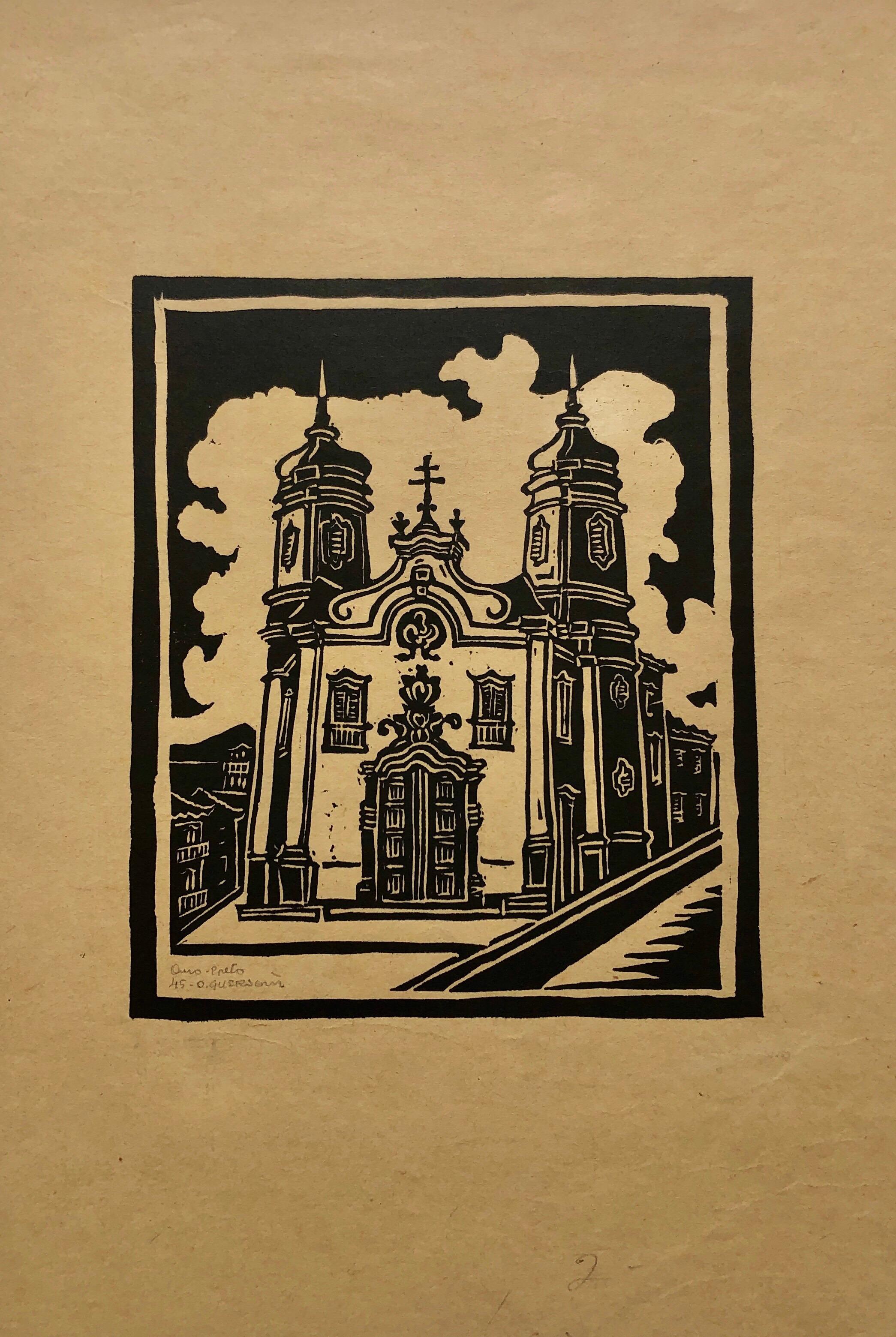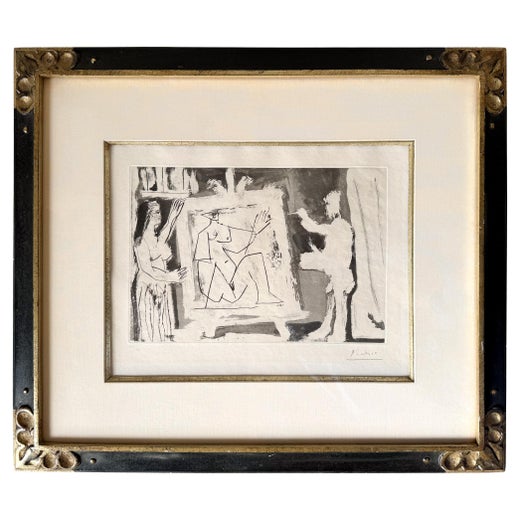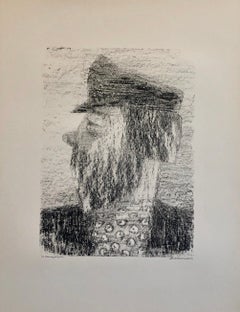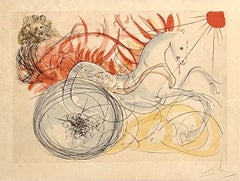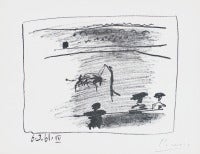
Banderillas
View Similar Items
Pablo PicassoBanderillas1961
1961
About the Item
- Creator:Pablo Picasso (1881-1973, Spanish)
- Creation Year:1961
- Dimensions:Height: 13.78 in (35 cm)Width: 16.54 in (42 cm)
- Period:
- Condition:Excellent.
- Gallery Location:Amsterdam, NL
- Reference Number:1stDibs: G140314342156
Pablo Picasso
One of the most prolific and revolutionary artists the world has ever seen, Pablo Picasso had a tremendous impact on the development of 20th-century modern art. Although he is best known for his association with the Cubist movement, which he founded with Georges Braque, Picasso’s influence extends to Surrealism, neoclassicism and Expressionism.
“Every act of creation is, first of all, an act of destruction,” the Spanish artist proclaimed. In Picasso's Cubist paintings, he emphasizes the two-dimensionality of the canvas, breaking with conventions regarding perspective, foreshortening and proportion. Picasso was inspired by Iberian and African tribal art. One of his most famous pre-Cubist works is Les Demoiselles d’Avignon (1907), a painting considered immoral and shocking at the time for its depiction of nude women whose faces resemble Iberian tribal masks.
Picasso made many portraits in this style, most often of the women in his life, their expressively colored faces composed of geometric shards of surface planes. In Woman in a Hat (Olga), 1935, he painted his first wife as an assemblage of abstract forms, leaving the viewer to decipher the subject through the contrasting colors and shapes. Picasso was a tireless artist, creating more than 20,000 paintings, drawings, prints, ceramics and sculptures. Tracing his life’s work reveals the progression of modern art, on which he had an unparalleled influence.
Browse an expansive collection of Pablo Picasso's art on 1stDibs.
- Vintage Russian Ukrainian Shtetl Scene Judaica Lithograph Jewish PortraitBy Anatoli Lvovich KaplanLocated in Surfside, FLPencil signed and dated, Judaica Lithograph. Anatoli Lwowitch Kaplan was a Russian painter, sculptor and printmaker, whose works often reflect his Jewish origins. His father was a b...Category
Mid-20th Century Modern Figurative Prints
MaterialsLithograph
- Vintage 1960s Pablo Picasso Photo Silkscreen Serigraph Pop ArtBy John BrowerLocated in Surfside, FLThis is for a Photo Silkscreen Serigraph it is Titled Pablo Picasso Cubist Spanish. light creasing to paper outside of image John Brower worked in Chicago as a billboard designer for 12 years. He taught art at Alverno College of Milwaukee, Wright Junior College in Chicago, the University of Illinois, and the University of Kentucky. A Pop Artist. In John Browers' work two important things come forward: the design and the image. In the painting Indian...Category
1960s Pop Art Figurative Prints
MaterialsScreen
- Surrealist Salvador Dali Large Pochoir Etching Drypoint Lithograph Chariot RiderBy Salvador DalíLocated in Surfside, FLSalvador Dalí (1904-1989) – Spanish painter, graphic artist and sculptor. Drypoint with etching and pochoir on Japon paper "Elijah and the Chariot," 1975, (Horse and rider) from the "Our Historical Heritage" suite. Pencil signed along the lower right and numbered 53/250 along the lower left. Literature: Field 75-4 J Framed; Height: 29 in x width: 35 in. Mat opening 19.5 X 25.5. The Spanish artist’s extensive oeuvre not only includes watercolors, drawings and sculptures but also tapestries; here a fine example from the limited edition ‘The Twelve Tribes of Israel’ The tapestry was created after an etching by Salvador Dalí from 1973 with the title ‘The Tribe of Judah’, which the artist created as part of a suite to mark the 25th anniversary of the State of Israel, and in which he represented the twelve tribes of Israel. This vintage French tapestry is an impeccable textile re-creation of a rare Dali etching. This is a flat weave Aubusson style tapisserie. The edition size was 500. The tapestry is inscribed with woven ‘Salvador Dalí’ lower right Genre: Surrealism Subject: people, architecture rendering Medium: textile Salvador Dali (Spanish, 1904-1989) Salvador Dali is considered as the greatest original artist of the surrealist art movement and one of the greatest masters of art of the twentieth century. Dali began to study art at the Royal Academy of Art in Madrid. He was expelled twice and never took the final examinations. His opinion was that he was more qualified than those who should have examined him. In 1928 Dali went to Paris where he met the Spanish painters Pablo Picasso and Joan Miro. He established himself as the principal figure of a group of surrealist artists grouped around Andre Breton, who was something like the theoretical "schoolmaster" of surrealism. Years later Breton turned away from Dali accusing him of support of fascism, excessive self-presentation and financial greediness. By 1929 Dali had found his personal style that should make him famous - the world of the unconscious that is recalled during our dreams. The surrealist theory is based on the theories of the psychologist Dr. Sigmund Freud. Recurring images of burning giraffes and melting watches became the artist's surrealist trademarks. Along with Rene Magritte his is considered the greatest of the Surrealists. His great craftsmanship allowed him to execute his paintings in a nearly photo realistic style. No wonder that the artist was a great admirer of the vintage Italian Renaissance painter Raphael. Meeting Gala was the most important event in the artist's life and decisive for his future career. She was a Russian immigrant and ten years older than Dali. When he met her, she was married to Paul Eluard. In 1933 Salvador Dali had his first one-man show in New York. One year later he visited the U.S. for the first time supported by a loan of US$500 from Pablo Picasso. To evade World War II, Dali chose the U.S.A. as his permanent residence in 1940. He had a series of spectacular exhibitions, among others a great retrospective at the Museum of Modern Art in New York. He has worked in paining, sculpture, tapestry, Daum glass and prints. Dali became the darling of the American High Society. Celebrities like Jack Warner or Helena Rubinstein gave him commissions for portraits. His artworks became a popular trademark and besides painting he pursued other activities - jewelry and dated clothing designs for Coco Chanel or film making with Alfred Hitchcock. In 1948 Dali and Gala returned to Europe, spending most of their time either in their residence in Ligate/Spain or in Paris/France or in New York. Dali developed a lively interest in science, religion and history. He integrated things into his art that he had picked up from popular science...Category
1970s Surrealist Figurative Prints
MaterialsDrypoint, Etching, Lithograph
- Vintage 1960s Andy Warhol Photo Silkscreen Serigraph Pop ArtBy John BrowerLocated in Surfside, FLThis is for a Photo Silkscreen Serigraph it is Titled Andy Warhol :Pop Artist American. light creasing to paper outside of image John Brower worked in Chicago as a billboard designer for 12 years. He taught art at Alverno College of Milwaukee, Wright Junior College in Chicago, the University of Illinois, and the University of Kentucky. A Pop Artist. In John Browers' work two important things come forward: the design and the image. In the painting Indian...Category
1960s Pop Art Figurative Prints
MaterialsScreen
- City Evening, Large Scale Whiteline Woodcut New York City at Night ed. 25By Aline FeldmanLocated in Surfside, FLAline Feldman was born in 1928 and grew up in Kansas. She studied design and printmaking at Washington University in St. Louis under Werner Drewes and Fred Becker, respectively. She studied painting at Indiana University...Category
1980s American Modern Figurative Prints
MaterialsWoodcut
- Henry Moore 1973 Lithograph edition 28/75 Sculpture Figures Reclining NudesBy Henry MooreLocated in Surfside, FLHenry Spencer Moore (1898 – 1986) Moore was born in Castleford, the son of a coal miner. He became well-known through his carved marble and larger-scale abstract cast bronze sculptures, and was instrumental in introducing a particular form of modernism to the United Kingdom later endowing the Henry Moore Foundation, which continues to support education and promotion of the arts. After the Great War, Moore received an ex-serviceman's grant to continue his education and in 1919 he became a student at the Leeds School of Art (now Leeds College of Art), which set up a sculpture studio especially for him. At the college, he met Barbara Hepworth, a fellow student who would also become a well-known British sculptor, and began a friendship and gentle professional rivalry that lasted for many years. In Leeds, Moore also had access to the modernist works in the collection of Sir Michael Sadler, the University Vice-Chancellor, which had a pronounced effect on his development. In 1921, Moore won a scholarship to study at the Royal College of Art in London, along with Hepworth and other Yorkshire contemporaries. While in London, Moore extended his knowledge of primitive art and sculpture, studying the ethnographic collections at the Victoria and Albert Museum and the British Museum. Moore's familiarity with primitivism and the influence of sculptors such as Constantin Brâncuși, Jacob Epstein, Henri Gaudier-Brzeska and Frank Dobson led him to the method of direct carving, in which imperfections in the material and marks left by tools became part of the finished sculpture. After Moore married, the couple moved to a studio in Hampstead at 11a Parkhill Road NW3, joining a small colony of avant-garde artists who were taking root there. Shortly afterward, Hepworth and her second husband Ben Nicholson moved into a studio around the corner from Moore, while Naum Gabo, Roland Penrose, Cecil Stephenson and the art critic Herbert Read also lived in the area (Read referred to the area as "a nest of gentle artists"). This led to a rapid cross-fertilization of ideas that Read would publicise, helping to raise Moore's public profile. The area was also a stopping-off point for many refugee artists, architects and designers from continental Europe en route to America—some of whom would later commission works from Moore. In 1932, after six year's teaching at the Royal College, Moore took up a post as the Head of the Department of Sculpture at the Chelsea School of Art. Artistically, Moore, Hepworth and other members of The Seven and Five Society would develop steadily more abstract work, partly influenced by their frequent trips to Paris and their contact with leading progressive artists, notably Pablo Picasso, Georges Braque, Jean Arp and Alberto Giacometti. Moore flirted with Surrealism, joining Paul Nash's modern art movement "Unit One", in 1933. In 1934, Moore visited Spain; he visited the cave of Altamira (which he described as the "Royal Academy of Cave Painting"), Madrid, Toledo and Pamplona. Moore made his first visit to America when a retrospective exhibition of his work opened at the Museum of Modern Art in New York City.[28] Before the war, Moore had been approached by educator Henry Morris, who was trying to reform education with his concept of the Village College. Morris had engaged Walter Gropius as the architect for his second village college at Impington near Cambridge, and he wanted Moore to design a major public sculpture for the site. In the 1950s, Moore began to receive increasingly significant commissions. He exhibited Reclining Figure: Festival at the Festival of Britain in 1951, and in 1958 produced a large marble reclining figure for the UNESCO building in Paris. With many more public works of art, the scale of Moore's sculptures grew significantly and he started to employ an increasing number of assistants to work with him at Much Hadham, including Anthony Caro and Richard Wentworth. Moore produced at least three significant examples of architectural sculpture during his career. In 1928, despite his own self-described extreme reservations, he accepted his first public commission for West Wind for the London Underground Building at 55 Broadway in London, joining the company of Jacob Epstein and Eric Gill..At an introductory speech in New York City for an exhibition of one of the finest modernist sculptors, Alberto Giacometti, Sartre spoke of The beginning and the end of history...Category
1970s Modern Abstract Prints
MaterialsLithograph
Recently Viewed
View AllRead More
Science Uncovers Hidden Truths behind Young Pablo Picasso’s Blue Period
From 1901 to 1904, Picasso limited his palette to bluish hues in producing some of his most famous early works. A new show looks at the recycled materials, hidden underpaintings, surprising influences and bohemian lifestyle that led to their creation.
Who Are the Most Popular Artists on 1stdibs?
Learn the stories of some of the world's most recognizable artworks and their makers.
